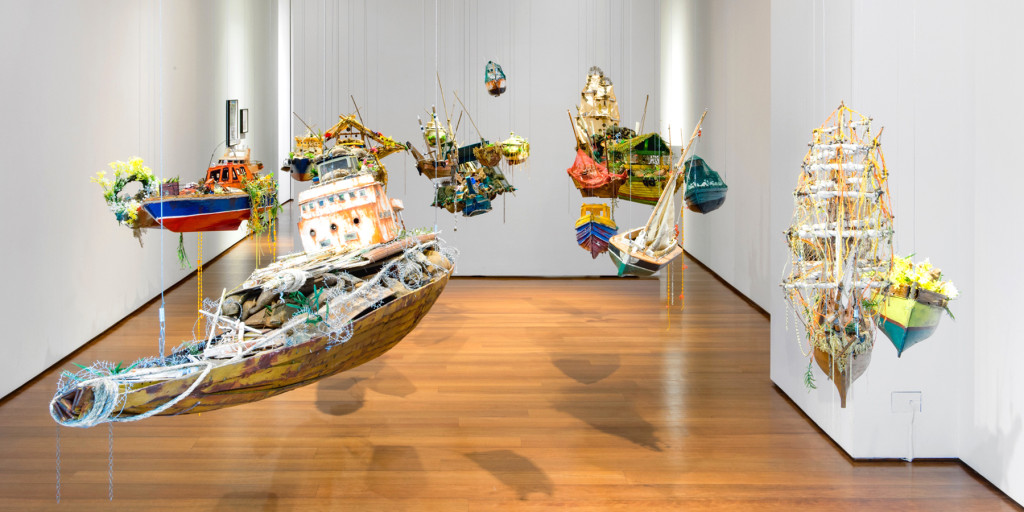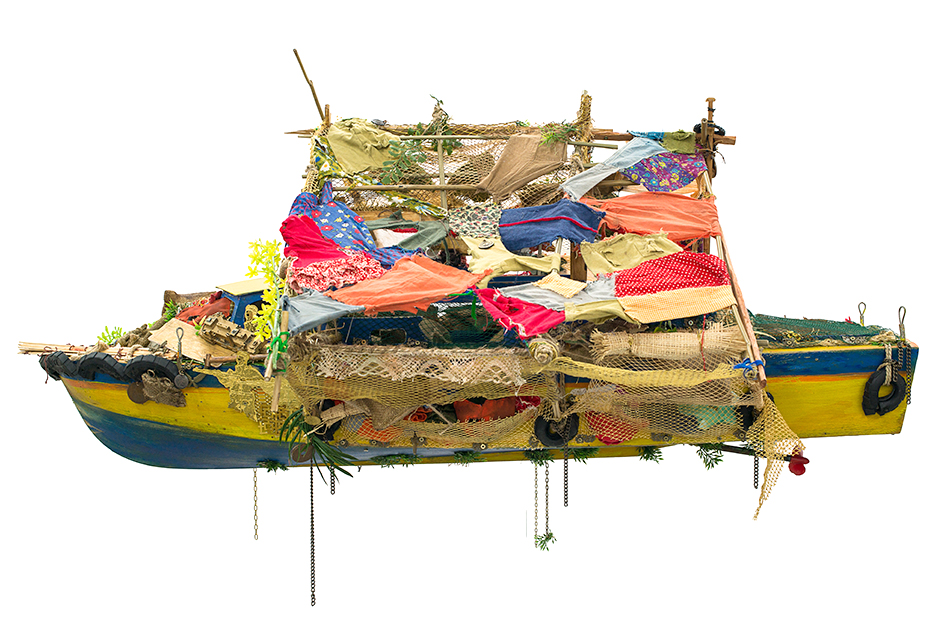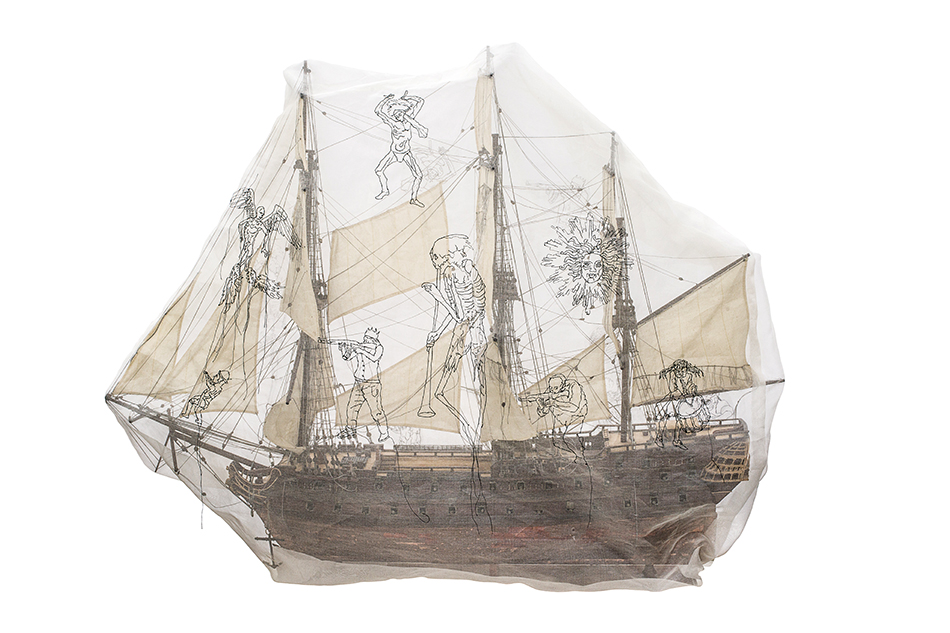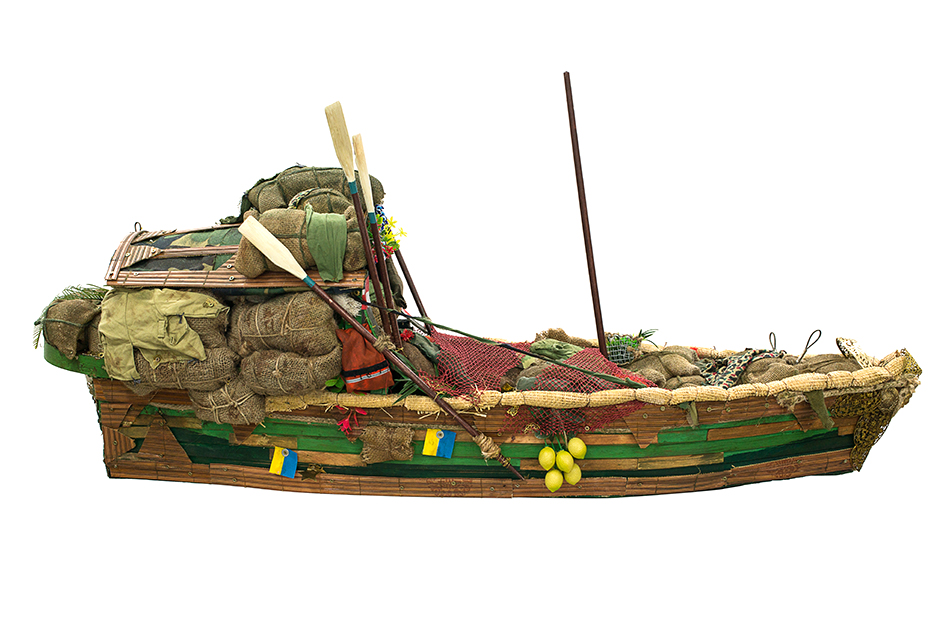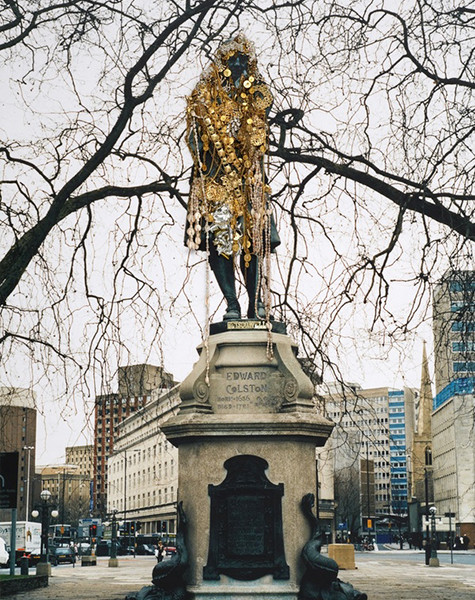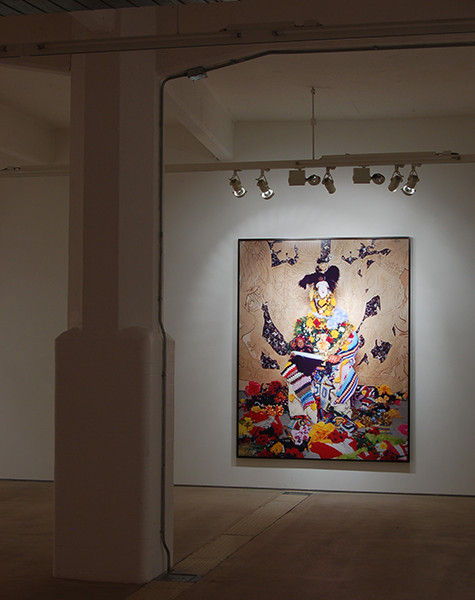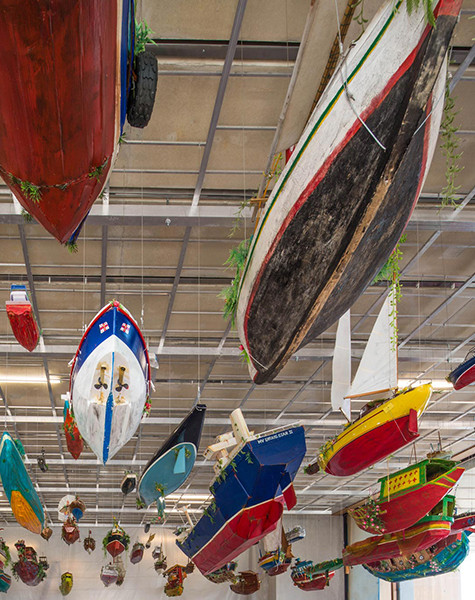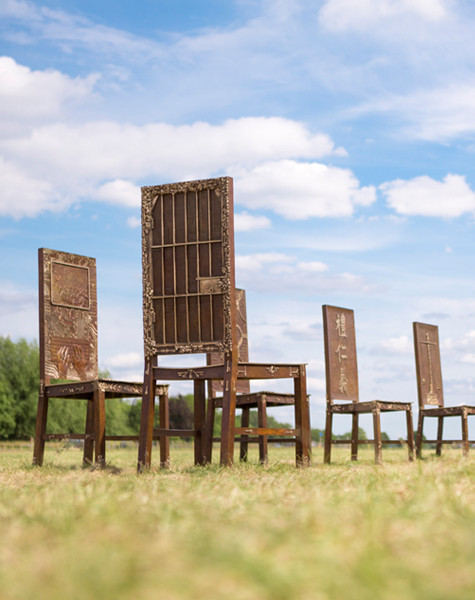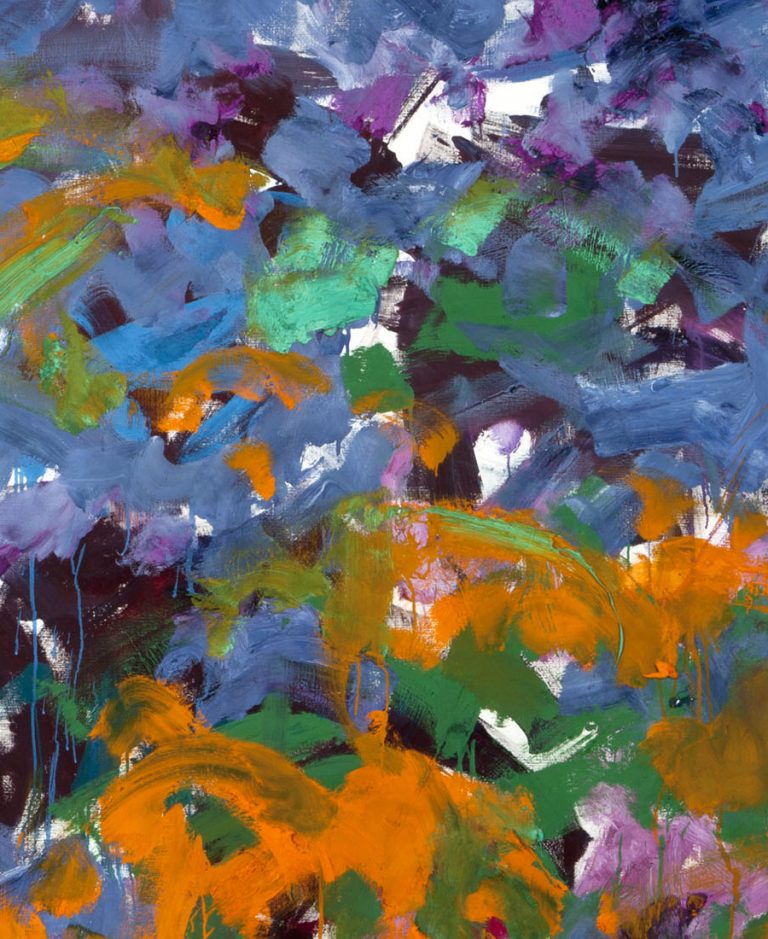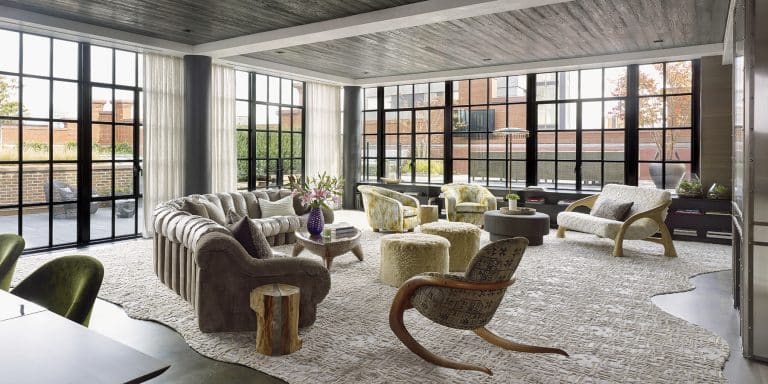
March 7, 2016British artist Hew Locke‘s first solo outing in New York, “The Wine Dark Sea,” is on view at Edward Tyler Nahem Fine Art through April 1 (portrait by Indra Khanna). Top: The show, which deals with the history of migration by sea, features 35 boat sculptures hung from the ceiling. All photos courtesy of the artist and Edward Tyler Nahem Fine Art, unless otherwise noted
Welcome to the flotilla!” Hew Locke says ceremoniously. He walks amid his procession of more than two-dozen model-sized boats, all extravagantly ornamented and hanging from the ceiling of the Edward Tyler Nahem Fine Art gallery in New York. “The Wine Dark Sea,” the London-based artist’s first solo New York exhibition, on view through April 1, derives its title from a phrase Homer used to describe the Mediterranean in The Odyssey. It immediately calls to mind the surge of refugees currently fleeing by sea to Europe from war and oppression, and it echoes other migrations, voluntary and not, throughout history.
Yet Locke’s show also feels like a parade. “It’s not just about something dark,” says the artist, whose clippers, battleships and lifeboats are like reliquaries, filled with torn doll’s clothes and burlap bundles suggesting worldly possessions and adorned with fake flowers, draped beads and medallions. “It’s about people searching for a better life, which is a human right,” Locke says. “It’s what we do.”
Imbuing this regatta is the artist’s own story of migration. Born in Scotland in 1959 to a white mother and a black father, Locke sailed with his family at age five across the Atlantic to his father’s homeland of Guyana, on the northern coast of South America. “The name Guyana literally means ‘land of many waters,’ ” says Locke, whose parents (both artists) influenced his aesthetic as much as did the vibrant, diverse culture of Guyana, a former British colony. “Guyana is six feet under sea level. You are aware of the sea as a real force.”
At 21, Locke returned to Britain to attend Falmouth University, in Cornwall, from which he received his bachelor’s degree in fine art in 1988. Six years later, for his degree show at the Royal College of Art in London, where he completed his master’s in sculpture, he made a massive boat called Ark that measured 15 feet long, 11 feet high and 6 feet wide. “It looked so different from anything at that time,” Locke recalls, noting this was at the height of the Young British Artists movement, when a certain level of minimalism prevailed. “The idea of the decorative, which today is taken for granted, was deeply frowned upon when I was in art school.”
Locke began to put on exhibitions with a group of friends. In the late 1990s, finding that viewers were misreading his vibrant work as what he calls “neo-folk art,” he stopped using color. He resumed in 2002, for a series of portraits of the royal family, particularly Queen Elizabeth, embellished with beads, sequins, toys, plastic flowers, lizards and insects. “I came back with a set of works that was deliberately exotic, making a parody of the idea of exotica,” Locke says.
He became known for his mixed-media sculptures and installations appropriating statuary, coats of arms, naval warships and other colonial regalia. For a solo show at London’s Hales Gallery, in 2007, Locke made 11 life-size photographs of himself disguised as such sinister figures as tyrants, corrupt kings and savages. Titled “How Do You Want Me?,” the series skewered the art world’s constant quest for new blood, or as Locke has put it, “the art world’s privileging of one type of ‘authenticity’ over another as it trawls the globe looking for sexy, ‘undiscovered’ talent.”

“To me, it’s a poetic metaphor for the layers of history,” Locke says of his liberally adorned vessels, “for the present sailing over the past.”
Locke had used boat imagery throughout his career, but the 2011 Folkestone Triennial marked the first time he produced a collection of small ships. These alluded to the tradition of captains giving votive boats to churches to hang as symbols of gratitude for survival at sea. In 2013, he re-created a version of that installation for the inauguration of the Pérez Art Museum Miami, festooning the lobby’s ceiling with some 70 ships. The work resonated in a city that has long served as a destination for waves of Caribbean immigrants. (It was later acquired by the museum.)
Locke likes that he was able to hang his fleet at eye-level at Edward Tyler Nahem, allowing viewers to study the details up close. He collects his models online and at quirky British auction houses and then customizes them with symbolic decorations. Navigating the installation — in which a United States Coast Guard craft hangs slightly higher than the rest, as if to indicate it’s in control — Locke points to a hull he designed based on photos of Cuban vessels. A patchwork of clothes creates an A-frame shelter. Nearby, a trans-steamer nods to the swift boat in Francis Ford Coppola’s film Apocalypse Now. The ships are liberally adorned with coins from nations like Syria, Gambia, Lebanon and Guyana. “All coins are talismans you put in your pocket for the journey to pay the ferryman,” he says, referring to the toll for passage across the River Styx in Greek mythology and to the fee refugees pay smugglers to traverse the Mediterranean.
The artist imagines that if his father, the sculptor Donald Locke, were still alive, they would be having a long conversation here about the nature of migration and how the younger man followed the older on a similar path. Locke then points to a vessel hanging upside down like a shipwreck, tethered to an upright craft. “To me, it’s a poetic metaphor for the layers of history,” he says, “for the present sailing over the past.”
Shop Hew Locke at Edward Tyler Nahem
